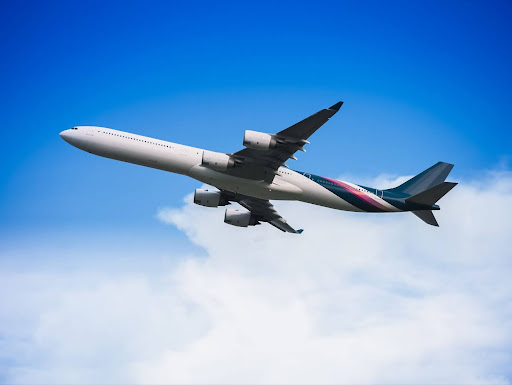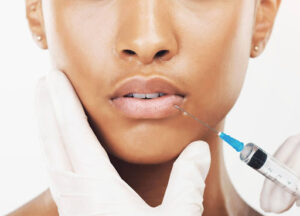Rhinoplasty, commonly referred to as a nose job, is a surgery procedure aimed at reshaping the nose for cosmetic or functional purposes. Whether it’s to enhance facial harmony, correct breathing difficulties, or address trauma-related deformities, rhinoplasty procedures have become increasingly popular worldwide.
However, patients often have concerns about the impact of air travel on their recovery process, especially in the immediate postoperative period. This article explains everything you need to know about flying after rhinoplasty, covering key aspects such as swelling, pressure, risks, medications, and recovery.
The Rhinoplasty Recovery Period
Following rhinoplasty surgery, patients typically experience swelling, bruising, and discomfort around the nose and facial area. The extent of swelling and bruising varies from person to person and depends on factors such as the extent of the surgical procedure, individual healing process, and adherence to postoperative care guidelines. While some patients may see significant improvement within the first week after surgery, complete recovery may take several weeks to months.
Book a rhinoplasty consultation
The Impact of Air Travel on Rhinoplasty Recovery
Air travel involves exposure to changes in cabin pressure, which can potentially affect the healing process after rhinoplasty. The primary concern is the increase in sinus pressure experienced during ascent and descent, which may exacerbate swelling and discomfort in the nasal area. Additionally, the dry air circulating within the cabin can contribute to nasal dryness and irritation, posing challenges for patients during the early stages of recovery when nasal passages are still healing.
Contact a head and neck surgeon in Montreal
How Soon After Your Rhinoplasty Procedure Can You Travel?
Patients often inquire about the appropriate timing for air travel after rhinoplasty. While it’s essential to consult with a surgical specialist for personalized advice, most surgeons recommend avoiding air travel for at least one to two weeks following surgery.
This initial period allows for recovery time during the early stages of healing and reduces the risk of complications such as postoperative bleeding and increased swelling. However, for long-haul flights or extensive travel plans, it may be prudent to wait until several weeks into the recovery process to ensure optimal healing post-surgery.
What is the right age for a nose job?
I Am An Out Of Town Patient, What Are My Options?
If you’re an out-of-town patient traveling for a rhinoplasty, careful planning and coordination are essential for a smooth recovery and proper healing. Before your nose job, communicate with your head and neck surgeon about travel plans and post-surgery arrangements. Allocate sufficient time for recovery, typically several weeks, before traveling back home.
Arrange for follow-up care with your surgeon to monitor progress and address any concerns. During the initial post-surgery weeks, prioritize rest and avoid strenuous activities. When flying, consider the airline’s policies regarding post-surgery travel and any accommodations needed. Ensuring comprehensive follow-up care and adhering to recovery guidelines optimize the healing process for successful outcomes.
What Are the Potential Risks and Complications When Flying Too Soon After Your Procedure?
While flying after rhinoplasty is generally safe, there are potential risks and complications to consider, including:
- Increased Swelling: The combination of cabin pressure changes and reduced mobility during the flight can lead to an increase in swelling, particularly in the nasal area.
- Risk of Bleeding: Changes in air pressure and physical exertion during travel may increase the risk of postoperative bleeding, especially in the first few days after surgery.
- Risk of Infection: Exposure to germs and bacteria in the confined space of an airplane cabin may pose a risk of infection, particularly during the early stages of healing when the surgical incisions are still fresh.
- Discomfort and Pain: Patients may experience discomfort, pain, or feelings of nausea during the flight, particularly if they have not fully recovered from surgery.
What Does Rhinoplasty Recovery Entail?
Rhinoplasty recovery encompasses various stages and considerations. In the initial days after nasal surgery, patients experience swelling, bruising, and discomfort. While immediate results are not fully visible, improvements gradually manifest in the following weeks. Patients typically refrain from heavy lifting and strenuous activities for several weeks post-surgery to prevent complications and promote optimal healing.
Within days after rhinoplasty, patients may resume light activities, gradually progressing to normal routines. By the first few weeks after surgery, swelling subsides, revealing the early outcome. However, complete recovery can take several months, with patients advised to avoid intense exercise until fully healed. Close monitoring of recovery progress ensures a successful outcome and a swift return to normal activities.
How long is recovery from rhinoplasty?
Managing Swelling and Pressure During Flight
To minimize discomfort and mitigate the effects of cabin pressure changes during air travel, patients can take several precautions:
- Use Nasal Sprays: Saline nasal sprays can help keep the nasal passages moist and alleviate dryness during the flight. However, it’s essential to avoid using decongestant sprays without consulting your surgeon, as they may have adverse effects on healing.
- Stay Hydrated: Drink plenty of water before and during the flight to prevent dehydration, which can worsen nasal dryness and discomfort.
- Consider Medications: If prescribed by your surgeon, take pain medications or decongestants as directed to manage swelling and alleviate any discomfort during the flight.
- Apply Cold Compresses: Consider bringing a cold compress or ice pack to apply gently to the nasal area during the flight to reduce swelling and soothe any discomfort.
- Avoid Strenuous Activities: Refrain from lifting heavy objects or engaging in strenuous activities during the flight, as this can increase blood flow to the nasal area and exacerbate swelling.
Rhinoplasty Services in Montreal
Clinique Face MD’s head and neck surgeons specialize in facial plastic surgery, offering comprehensive rhinoplasty services in Montreal. With a focus on precision and patient satisfaction, our team provides personalized treatment plans tailored to each individual’s unique aesthetic goals and anatomical features. Our expertise extends to both primary and revision nose surgeries.
Here is a list of our rhinoplasty services:
- Rhinoplasty
- Revision rhinoplasty
- Ultrasonic rhinoplasty
- Ethnic rhinoplasty
- Middle Eastern rhinoplasty
- Alar base reduction
- Non-surgical nose job
- Male rhinoplasty
Through meticulous surgical techniques and advanced technology, the team at Clinique Face MD prioritizes safety, comfort, and natural-looking results.





